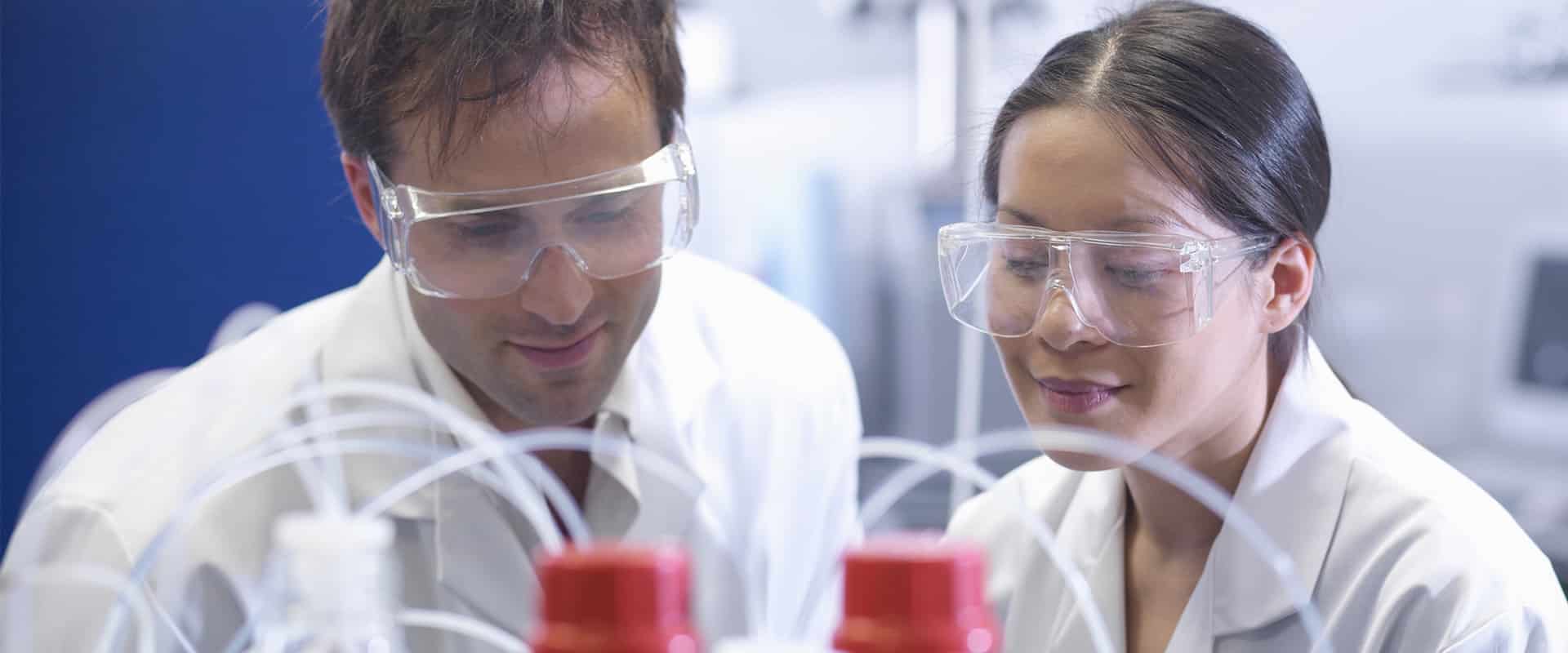Case Study
Hepatitis B Virus Infection Dysregulates Lipid Biosynthesis Pathways
The results from this study demonstrate how global metabolomics can be employed to identify metabolic targets that play a role in chronic HBV infection and potentially other hepatic or viral diseases.
This platform will allow the identification of novel biomarkers (metabolites) that might otherwise go undetected that can be used as therapeutic targets or as biomarkers of chronic HBV infection severity.
This platform will allow the identification of novel biomarkers (metabolites) that might otherwise go undetected that can be used as therapeutic targets or as biomarkers of chronic HBV infection severity.

The Challenge: Decipher the Interaction Between the Host’s Hepatic Lipid Metabolism and HBV Infection
Hepatitis B is a serious liver infection caused by the hepatitis B virus (HBV). For many people, hepatitis B is a short-term illness with mild symptoms, including fatigue, poor appetite, stomach pain, nausea, and jaundice. Unfortunately for others, hepatitis B can become a long-term chronic infection that can lead to serious, life-threatening health issues like liver failure, liver cancer, or cirrhosis. HBV is a global public health threat. According to the World Health Organization (WHO), the worldwide estimated prevalence of HBV infection is 3.5%, with 257 million people living with the chronic infection.1
A hallmark of chronic HBV infection is the high circulating levels of hepatitis B surface antigen (HBsAg) particles. Therefore, sustained low levels of HBsAg particles are considered an important clinical endpoint for HBV therapies and a vital goal of a functional cure. All viruses rely on host pathways for successful replication, and there is increasing interest in identifying these pathways as novel therapeutic targets for HBV drug discovery. However, the interaction between the host’s liver and HBV infection has not been completely elucidated.
Metabolon Insight: Metabolomics Helps Uncover a Link Between the Host and HBV Infection
Metabolon helped identify and characterize metabolomic changes that contribute to chronic HBV infection.2 The Metabolon Global Discovery Panel and the Complex Lipids Targeted Panel were used to analyze liver tissue samples from HBV-infected and non-infected chimeric humanized mice.
The Solution: HBV Infection Leads to Metabolic Changes
The researchers worked with Metabolon to perform metabolomic analysis of liver tissue samples from uninfected and HBV-infected humanized chimeric liver (uPA/SCID) mice to determine if HBV infection modulates the host’s lipid pathways. A total of 1,698 metabolites were identified in liver tissue samples. Metabolomic profiling of livers from these mice revealed HBV-dependent changes in lipid metabolic pathways. HBV-dependent increases were observed in several long-chain free fatty acids (FFA), including monounsaturated, saturated, and polyunsaturated fatty acids. Myristate, palmitate, oleate, and linoleate are FFAs that were substantially upregulated in the HBV-infected samples compared to non-infected samples. HBV infection also resulted in statistically significant changes in the levels of metabolites within mevalonate and several other lipid pathways.
Given the observed HBV-dependent increases of FFA, the researchers also evaluated whether modulation of lipid biosynthesis pathways can inhibit HBV infection and HBsAg particle formation. They found that small molecules targeting enzymes within lipid biosynthetic pathways inhibited the secretion of HBsAg in HBV-infected human hepatic cells.
The Outcome: Metabolomics Can Identify Metabolic Targets That Drive Chronic HBV Infection
The role of metabolomics is instrumental in the identification and assessment of metabolites associated with disease progression or disease phenotyping. This study identified several novel lipid metabolic pathways dysregulated during HBV infection. Modulation of these lipid pathways offers new potential avenues for HBV treatments. The results from this study demonstrate how global metabolomics can be employed to identify metabolic targets that play a role in chronic HBV infection and potentially other hepatic or viral diseases. Metabolomics technology will allow the identification of novel biomarkers (metabolites) that might otherwise go undetected that can be used as therapeutic targets or as biomarkers of chronic HBV infection severity.
References
1. WHO. Global hepatitis report, 2017. Geneva 2017: World Health Organization; 2017.
2. Hyrina A, Burdette D, Song Z, et al. Targeting lipid biosynthesis pathways for hepatitis B virus cure. PLoS One. 2022;17(8):e0270273. Published 2022 Aug 4. doi:10.1371/journal.pone.0270273




